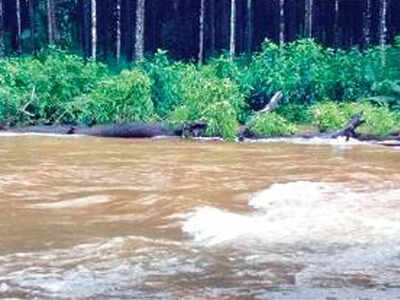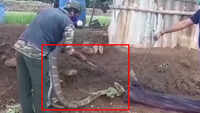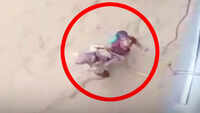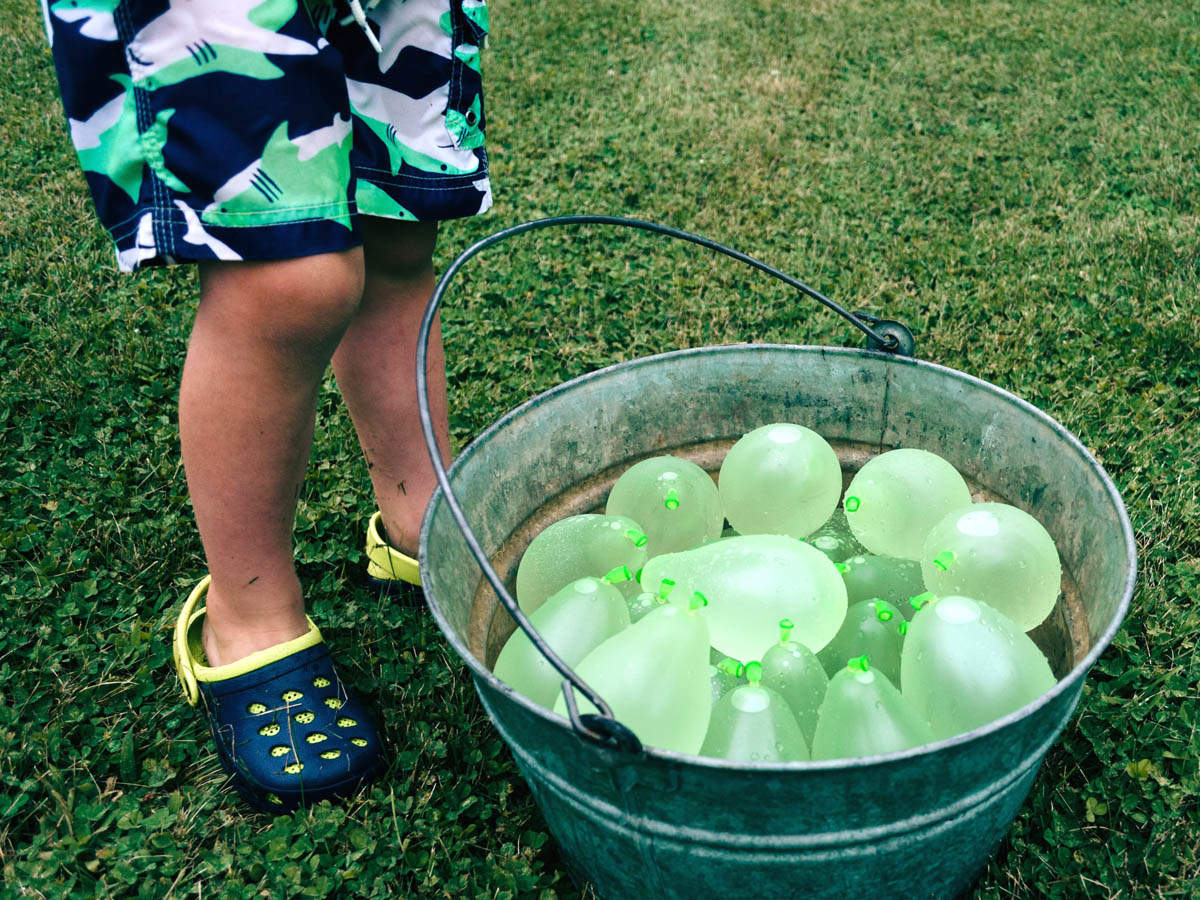
QUEPEM: With uprooted trees, stumps and other remains being deposited at the foot of Pansaimoll rock carvings due to the swollen Kushawati river, locals fear the 9,000-year-old invaluable artwork of Pirla village in Sanguem may be lost forever.
Before the onset of monsoon, a huge tree came crashing down near the site. Before it could be removed, another tree debris came along with the flow and remained stuck at the same site.
Discovered on May 8, 1993, these carvings on a laterite stone in Pansaimoll have put Goa on the rock art map of India. Though in a remote place, it has been attracting students, tourists and researchers from far and wide.
Vithal Khandeparker, a retired agriculture officer and a Pansaimoll resident said, “The river flow has been partially blocked due to the debris of the two trees next to the rock art carvings.”
The site becomes fully accessible after the monsoon when the river bed dries up. Every year, however, the sludge has to be removed to expose the carvings.
“A huge retaining wall on the south side of the river bank has also collapsed,” Khandeparker said, adding, “Authorities have been informed about the tree debris and the likely damage it may cause to the carvings.”
Khandeparker told TOI that an official from the archaeology department informed him that a tender has been floated to clear the uprooted trees.
The rock carvings depict the symbol of a fertility cult, religious cosmology, triskelion, zoo-morphs like Zebu bull, deer, gaur, a scene of mating animals and large animals hooves.
Before the onset of monsoon, a huge tree came crashing down near the site. Before it could be removed, another tree debris came along with the flow and remained stuck at the same site.
Discovered on May 8, 1993, these carvings on a laterite stone in Pansaimoll have put Goa on the rock art map of India. Though in a remote place, it has been attracting students, tourists and researchers from far and wide.
Vithal Khandeparker, a retired agriculture officer and a Pansaimoll resident said, “The river flow has been partially blocked due to the debris of the two trees next to the rock art carvings.”
The site becomes fully accessible after the monsoon when the river bed dries up. Every year, however, the sludge has to be removed to expose the carvings.
“A huge retaining wall on the south side of the river bank has also collapsed,” Khandeparker said, adding, “Authorities have been informed about the tree debris and the likely damage it may cause to the carvings.”
Khandeparker told TOI that an official from the archaeology department informed him that a tender has been floated to clear the uprooted trees.
The rock carvings depict the symbol of a fertility cult, religious cosmology, triskelion, zoo-morphs like Zebu bull, deer, gaur, a scene of mating animals and large animals hooves.

Coronavirus outbreak
Trending Topics
LATEST VIDEOS
More from TOI
Navbharat Times
Featured Today in Travel
Quick Links
Kerala Coronavirus Helpline NumberHaryana Coronavirus Helpline NumberUP Coronavirus Helpline NumberBareilly NewsBhopal NewsCoronavirus in DelhiCoronavirus in HyderabadCoronavirus in IndiaCoronavirus symptomsCoronavirusRajasthan Coronavirus Helpline NumberAditya ThackerayShiv SenaFire in MumbaiAP Coronavirus Helpline NumberArvind KejriwalJammu Kashmir Coronavirus Helpline NumberSrinagar encounter
Get the app







